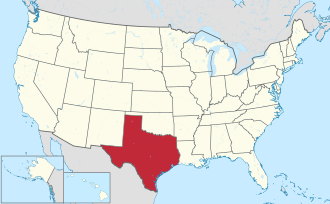Demographics
Historical population| Census | Pop. | Note | %± |
|---|
| 1860 | 3,653 | | — |
|---|
| 1870 | 7,453 | | 104.0% |
|---|
| 1880 | 16,554 | | 122.1% |
|---|
| 1890 | 27,583 | | 66.6% |
|---|
| 1900 | 41,355 | | 49.9% |
|---|
| 1910 | 46,760 | | 13.1% |
|---|
| 1920 | 43,332 | | −7.3% |
|---|
| 1930 | 43,036 | | −0.7% |
|---|
| 1940 | 38,355 | | −10.9% |
|---|
| 1950 | 31,282 | | −18.4% |
|---|
| 1960 | 23,650 | | −24.4% |
|---|
| 1970 | 22,596 | | −4.5% |
|---|
| 1980 | 25,024 | | 10.7% |
|---|
| 1990 | 27,146 | | 8.5% |
|---|
| 2000 | 32,321 | | 19.1% |
|---|
| 2010 | 35,089 | | 8.6% |
|---|
| 2020 | 35,874 | | 2.2% |
|---|
| 2024 (est.) | 38,771 | [4] | 8.1% |
|---|
|
Hill County, Texas – Racial and ethnic composition
Note: the US Census treats Hispanic/Latino as an ethnic category. This table excludes Latinos from the racial categories and assigns them to a separate category. Hispanics/Latinos may be of any race.| Race / Ethnicity (NH = Non-Hispanic) | Pop 2000 [9] | Pop 2010 [7] | Pop 2020 [8] | % 2000 | % 2010 | % 2020 |
|---|
| White alone (NH) | 25,079 | 25,836 | 24,123 | 77.59% | 73.63% | 67.24% |
| Black or African American alone (NH) | 2,359 | 2,161 | 2,055 | 7.30% | 6.16% | 5.73% |
| Native American or Alaska Native alone (NH) | 84 | 118 | 137 | 0.26% | 0.34% | 0.38% |
| Asian alone (NH) | 78 | 105 | 188 | 0.24% | 0.30% | 0.52% |
| Pacific Islander alone (NH) | 4 | 20 | 15 | 0.01% | 0.06% | 0.04% |
| Other race alone (NH) | 9 | 19 | 87 | 0.03% | 0.05% | 0.24% |
| Mixed or multiracial (NH) | 348 | 403 | 1,385 | 1.08% | 1.15% | 3.86% |
| Hispanic or Latino (any race) | 4,360 | 6,427 | 7,884 | 13.49% | 18.32% | 21.98% |
| Total | 32,321 | 35,089 | 35,874 | 100.00% | 100.00% | 100.00% |
As of the census [10] of 2000, 32,321 people, 12,204 households, and 8,725 families were residing in the county. The population density was 34 people/sq mi (13 people/km2). The 14,624 housing units averaged 15 per square mile (5.8/km2). The racial makeup of the county was 84.16% White, 7.40% African American, 0.44% Native American, 0.25% Asian, 6.04% from other races, and 1.71% from two or more races. About 13.49% of the population were Hispanics or Latinos of any race.
Of the 12,204 households, 30.7% had children under 18 living with them, 57.5% were married couples living together, 10.1% had a female householder with no husband present, and 28.5% were not families. About 24.8% of all households were made up of individuals, and 12.5% had someone living alone who was 65 or older. The average household size was 2.58, and the average family size was 3.07.
A Williams Institute analysis of 2010 census data found about 3.2 same-sex couples per 1,000 households were in the county. [11]
In the county, the age distribution was 25.9% under 18, 8.5% from 18 to 24, 24.9% from 25 to 44, 23.4% from 45 to 64, and 17.3% who were 65 or older. The median age was 38 years. For every 100 females there were 96.7 males. For every 100 females age 18 and over, there were 93.7 males.
The median income for a household in the county was $31,600, and for a family was $37,791. Males had a median income of $29,438 versus $20,765 for females. The per capita income for the county was $15,514. About 11.90% of families and 15.70% of the population were below the poverty line, including 19.70% of those under age 18 and 14.60% of those age 65 or over.
Serving Hill County exclusively are media outlets KHBR Radio - 1560 AM and The Reporter newspaper. Hill County is currently listed as part of the Dallas-Fort Worth DMA. Local media outlets include: KDFW-TV, KXAS-TV, WFAA-TV, KTVT-TV, KERA-TV, KTXA-TV, KDFI-TV, KDAF-TV, and KFWD-TV, although it is located in Central Texas and a neighboring county of the Waco metropolitan area. All of the Waco/Temple/Killeen market stations also provide coverage for Hill County. They include: KCEN-TV, KWTX-TV, KXXV-TV, KDYW, and KWKT-TV. Northland Cable Television continues to offer all of the above stations in Hillsboro.
This page is based on this
Wikipedia article Text is available under the
CC BY-SA 4.0 license; additional terms may apply.
Images, videos and audio are available under their respective licenses.




